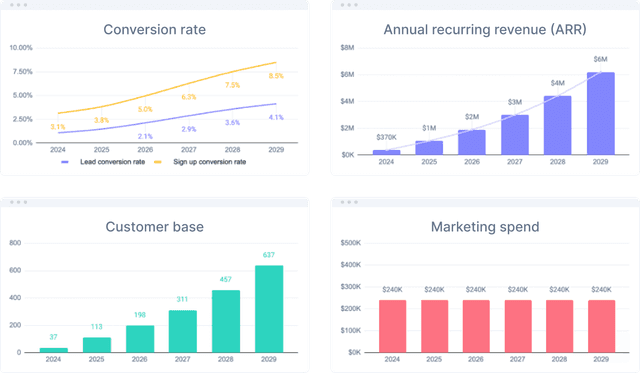Average revenue per user (ARPU) and average ticket are metrics used to indicate a business's financial performance. They provide valuable insights into customer behavior, marketing strategies, and overall sales performance. Although they sound similar, they are two distinct metrics related to different revenue generation aspects.
Revenue per User (ARPU)
ARPU measures the average revenue generated by a single user over a given period. It is calculated by dividing the total revenue by the number of users:
ARPU helps businesses understand the value they are generating from each user and provides insights into the effectiveness of their marketing strategies. A high ARPU indicates that a company successfully monetizes the traffic and maximizes revenue from each user that visits the website.
Average Ticket
On the other hand, the average ticket measures the average size of each transaction. It is calculated by dividing the total revenue by the number of transactions.
The average ticket provides insights into the customer's spending behavior and the types of products or services they are purchasing. A high average ticket indicates that customers buy more expensive items, whereas a low average ticket suggests purchasing smaller or less expensive items.
Download our free template and find out which levers help you increase both ARPU and average tickets.

Differences between ARPU and average ticket
Although ARPU and average ticket are both key for measuring the financial performance of a business, they are different in several criticalways.
- Focus: ARPU focuses on the revenue generated by each user, while average ticket focuses on the average size of each transaction.
- Timeframe: ARPU measures revenue generated over a given period, while average ticket measures the average size of each transaction in real time.
- Source data: ARPU is calculated based on the number of users, while the average ticket uses the number of transactions.
- Insights: ARPU provides insights into the value generated from the website traffic, while average ticket provides insights into the customer's spending behavior and the types of products they purchase.
Why you should use ARPU to analyze your growth strategies
Variations in the ARPU reflect changes in the company's ability to generate revenue and provide a granular view on a per-user basis, allowing growth professionals to track revenue sources and growth.
From a mathematical point of view, it also describes the conversion rate and average ticket product.
This means that if you focus on increasing either the conversion rate or the average ticket, you're directly increasing the ARPU and, consequently, your revenue.
Regarding CRO and experimentation, it is common to see AB tests that increase the conversion rate while decreasing the average ticket. Keeping an eye on the ARPU helps ensure you do not forget the bottom line: your revenue.
Wrapping up
To summarize, ARPU and average ticket are crucial metrics for measuring the financial performance of a business, marketing campaigns, and experiments. Although they measure different aspects of revenue generation, they both offer valuable insights into customer behavior and sales performance.
Businesses should track both metrics to understand their financial performance and make informed decisions about future growth strategies. If you want to increase these metrics for your business, create your free account and explore our platform.